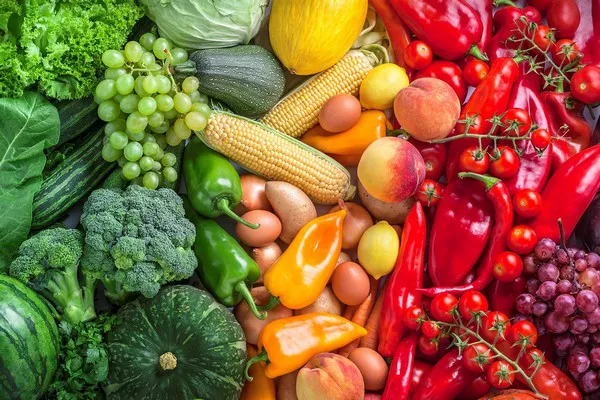Food allergies are a growing public health concern, affecting millions of individuals worldwide. An allergic reaction occurs when the immune system mistakenly identifies certain proteins in food as harmful invaders. This triggers a range of symptoms that can vary from mild discomfort to severe life-threatening reactions. While there are numerous food allergens, some are more prevalent than others. In this article, we explore the most common food allergy, its prevalence, symptoms, diagnosis, and management.
The Prevalence of Food Allergies
Food allergies are on the rise globally, with a significant impact on both children and adults. Among the various food allergens, eight major allergens are responsible for the majority of food-related allergic reactions. These include:
1. Milk
Allergies to cow’s milk are common, especially in infants and young children. However, some people may also be allergic to milk from other animals, such as goats or sheep.
2. Eggs
Egg allergies are prevalent in children and can often be outgrown. The egg white proteins are more allergenic than the yolk.
3. Peanuts
Peanut allergies are known for their severity and potential for causing severe allergic reactions, including anaphylaxis. They tend to be lifelong allergies.
SEE ALSO: Unveiling the Lethality of Peanut Allergy: Things You Have to Know
4. Tree nuts
This category includes a variety of nuts, such as almonds, walnuts, cashews, hazelnuts, pistachios, and more. Tree nut allergies are often lifelong and can be severe.
5. Wheat
Wheat allergies are more common in children and are often outgrown by adulthood. However, in some cases, they can persist throughout life.
SEE ALSO: What is a Gluten Allergy: Everything You Need to Know
6. Soy
Soy allergies are more common in infants and young children but can also affect adults.
7. Fish
Allergies to various fish species, such as salmon, tuna, and cod, are common and can manifest in adulthood even without prior sensitization.
8. Shellfish
This category includes crustaceans like shrimp, crab, lobster, as well as mollusks like clams, mussels, oysters, and scallops. Shellfish allergies are typically lifelong and can cause severe reactions.
Out of these, peanuts and tree nuts are the most common food allergens in many countries, including the United States, Europe, and Canada.
However, there can be differences in the most common food allergies between different regions or countries. Food allergy prevalence can be influenced by various factors, including genetics, dietary habits, environmental exposures, and cultural practices. As a result, the prevalence of specific food allergies may vary significantly from one region or country to another.
The following were some common food allergies in different regions:
1. United States and Canada: In North America, the most prevalent food allergens are peanuts, tree nuts, milk, eggs, wheat, soy, fish, and shellfish. Peanuts and tree nuts have consistently been reported as the most frequent food allergens in these countries.
2. Europe: In Europe, the common food allergens are similar to those in North America. Peanuts, tree nuts, milk, eggs, wheat, soy, fish, and shellfish are among the top allergens reported in European countries.
3. East Asia: In countries like Japan, China, and South Korea, food allergies to shellfish, fish, and soy are relatively common. Wheat and milk allergies are also prevalent in some regions.
4. Middle East: In the Middle Eastern region, allergies to tree nuts, peanuts, milk, and eggs are frequently observed.
5. Australia and New Zealand: Similar to North America and Europe, peanuts, tree nuts, milk, eggs, wheat, soy, fish, and shellfish are common food allergens in Australia and New Zealand.
Symptoms of Food Allergy
Food allergy symptoms can manifest in various ways, depending on the individual and the severity of the allergic reaction. Common symptoms include:
1. Skin reactions: These can range from mild hives and eczema to more severe swelling and itching.
2. Respiratory symptoms: Allergic rhinitis (hay fever), asthma, and difficulty breathing can occur.
3. Gastrointestinal issues: Nausea, vomiting, diarrhea, and abdominal pain may develop.
4. Cardiovascular symptoms: In severe cases, anaphylaxis can lead to a drop in blood pressure and rapid heart rate.
Anaphylaxis is a severe and potentially life-threatening allergic reaction that requires immediate medical attention. It can lead to respiratory distress, a sudden drop in blood pressure, and loss of consciousness. Epinephrine (adrenaline) is the first-line treatment for anaphylaxis, emphasizing the importance of carrying an epinephrine auto-injector for those at risk.
Diagnosis of Food Allergy
Accurate diagnosis is essential for effectively managing food allergies. If you suspect a food allergy, seeking professional medical advice is crucial. An allergist or immunologist will take a thorough medical history and may conduct the following tests:
1. Skin prick test: A small amount of allergen extract is placed on the skin, and the skin is pricked to allow the allergen to enter the skin’s surface. If a raised bump or a wheal appears, it indicates a possible allergy to that specific food.
SEE ALSO: Skin Allergy Test: Everything You Need to Know
2. Blood tests: Specific IgE blood tests can measure the levels of IgE antibodies in response to certain allergens, helping to identify potential food allergies.
3. Oral food challenge: In some cases, an allergist may perform a supervised food challenge in a clinical setting to confirm or rule out a suspected allergy.
It is essential to avoid self-diagnosis and self-treatment as this can lead to incorrect assumptions and potential risks.
Managing Food Allergies
As there is currently no cure for food allergies, the primary approach to managing them is strict avoidance of the allergenic food. Some key strategies include:
1. Reading food labels: Carefully inspect product labels for potential allergens before purchasing or consuming any food item.
2. Cross-contamination prevention: Ensure separate cooking utensils and preparation areas for allergenic and non-allergenic foods.
3. Allergy action plan: Work with a healthcare professional to develop a personalized allergy action plan, especially for those at risk of anaphylaxis.
4. Educating others: Inform friends, family, teachers, and caregivers about the allergy, the symptoms, and emergency protocols.
5. Alternative recipes: Explore and embrace alternative recipes and ingredients to maintain a balanced and enjoyable diet.
6. Emergency preparedness: Always carry an epinephrine auto-injector and be familiar with its usage in case of accidental exposure.
Conclusion
Food allergies are a significant health concern affecting millions of people worldwide. While there are many food allergens, peanuts and tree nuts stand out as the most common triggers in several regions. Proper diagnosis and management are critical for individuals with food allergies, and strict avoidance of allergenic foods remains the primary approach. With ongoing research and advancements in the field, the hope is to develop better treatments and preventive strategies, ultimately improving the quality of life for those living with food allergies. As awareness and understanding continue to grow, society can work together to create safer environments and support those managing food allergies.
[inline_related_posts title=”Related Topics” title_align=”left” style=”list” number=”3″ align=”none” ids=”1210,1237,1207″ by=”categories” orderby=”rand” order=”DESC” hide_thumb=”no” thumb_right=”no” views=”no” date=”yes” grid_columns=”1″ post_type=”” tax=””]


































